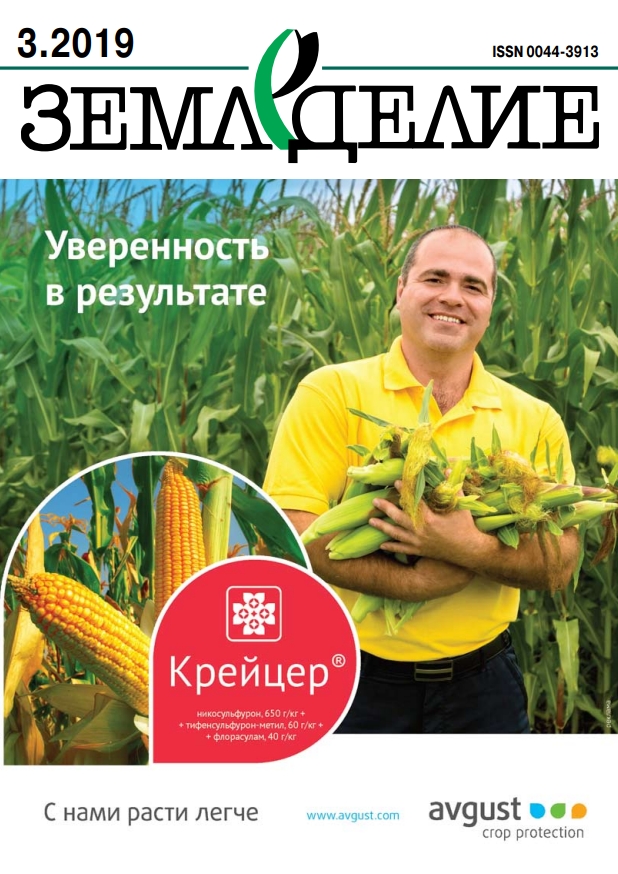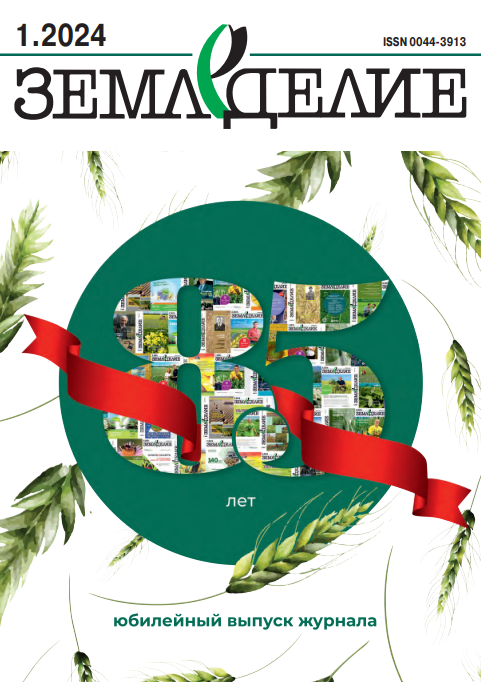Влияние сроков посева и норм высева на урожайность новых сортов озимой пшеницы
DOI: 10.24411/0044-3913-2019-10305
УДК 631.53.048
И. Д. Фадеева , кандидат сельскохозяйственных наук, ведущий научный сотрудник (e-mail: Адрес электронной почты защищен от спам-ботов. Для просмотра адреса в вашем браузере должен быть включен Javascript.)
М. Ш. Тагиров , доктор сельскохозяйственных наук, руководитель
И. Н. Газизов , научный сотрудник
Татарский научно-исследовательский институт сельского хозяйства – обособленное структурное подразделение федерального исследовательского центра КазНЦ РАН, ул. Оренбургский тракт, 48, Казань, 420059, Российская Федерация
В условиях Предкамской зоны Республики Татарстан в 2016–2018 гг. изучали новые сорта озимой мягкой пшеницы Дарина, Универсиада, Султан с целью определения их реакции на изменение сроков сева и выявления оптимальных норм высева. Опыты закладывали по чистому пару при оптимальном (1…3 сентября) и позднем (15…20 сентября) сроках сева и четырех нормах высева (5,0; 5,5; 6,0; 6,5 млн всхожих семян/га). Площадь делянки 25 м2 в шестикратной повторности. Технология возделывания общепринятая для зоны. Самую высокую урожайность (4,9 т/га) сформировал сорт Универсиада при оптимальном сроке посева нормой 5,5 млн шт./га. Сорт Султан в меньшей степени снижал урожайность (на 23,5 %) при позднем сроке сева, чем другие сорта (Дарина – на 26,0 %, Универсиада – на 32,7 %). Оптимальной нормой при посеве с 1 по 3 сентября для сортов Дарина и Султан была 6,0 млн шт./га, сорта Универсиада – 5,5 млн шт./га. При позднем посеве увеличение нормы высева приводило к снижению урожайности в меньшей степени. При втором сроке растения не могли хорошо раскуститься до окончания осенней вегетации, что сказывалось на снижении количества перезимовавших стеблей до 67,1 %. Самый большой коэффициент кущения отмечен у сорта Универсиада при посеве нормой 5,0 млн шт./га, как при первом (4,2), так и при втором сроках (2,3). Наименьший коэффициент водопотребления отмечен при первом сроке сева у сортов Универсиада (409) и Султан (410), самый высокий – у сорта Дарина (430). Наибольшее влияние на урожайность зерна в среднем по сортам оказывал срок сева (90,51 %), доля нормы высева составляла 5,10 %, взаимодействия факторов «срок сева × норма высева» – 1,77 %.
Ключевые слова: озимая мягкая пшеница (Triticum aestivum L.), сорт, урожайность, срок сева, норма высева, коэффициент водопотребления.
Для цитирования: Фадеева И. Д., Тагиров М. Ш., Газизов И. Н. Влияние сроков посева и норм высева на урожайность новых сортов озимой пшеницы // Земледелие. 2019. № 3. С. 21–24. DOI: 10.24411/0044-3913-2019-10305.
Influence of Seeding Terms and Rates on the Yield of New Winter Wheat Varieties
I. D. Fadeeva, M. Sh. Tagirov, I. N. Gazizov
Tatarian Agricultural Research Institute – autonomous structural subdivision of the Federal Research Center of the Kazan Scientific Center of the RAS, ul. Orenburgskii trakt, 48, Kazan’, 420059, Russian Federation
Abstract. In 2016–2018 under conditions of the Pre-Kama zone of the Republic of Tatarstan, new varieties of winter soft wheat ‘Darina’, ‘Universiada’, ‘Sultan’ were studied in order to determine their response to changing the sowing time and to identify optimal seeding rates. The experiments were laid on bare fallow at the optimal (September 1–3) and late (September 15–20) sowing terms and four seeding rates (5.0, 5.5, 6.0, 6.5 million germinating seeds/ha). The plot area was 25 m2; the replication was six-fold. Cultivation technology was common for the zone. The maximum yield of 4.9 t/ ha was formed by Universiada variety with the optimal sowing term at a seeding rate of 5.5 million seeds/ha. Sultan variety reduced yield to a lesser extent (by 23.5%) than other varieties (Darina – by 26.0%, Universiada – by 32.7%) at the late sowing term. The optimal seeding rate for sowing from September 1 to September 3 for Darina and Sultan varieties was 6.0 million seeds/ha, for Universiada variety it was 5.5 million seeds/ha. With late sowing, the increase in the seeding rate led to a decrease in the yield to a lesser extent. With the second term of sowing, the plants could not get well till the end of the autumn vegetation, which led to a decrease in the number of overwintered stems to 67.1%. The largest tillering factor was recorded for Universiada variety when sowing with the rate of 5.0 million seeds/ha, both in the first (4.2) and the second sowing terms (2.3). The value of the coefficient of water consumption varied depending on the variety, sowing terms and seeding rates. The least value of this indicator was noted in the first sowing term in Universiada (409) and Sultan (410) varieties, the largest one in Darina variety (430). Sowing term had the most significant effect on the grain yield on average for all varieties (90.51%). Seeding rates and the interaction of factors sowing term and seeding rate had a smaller impact, 5.10% and 1.77%, respectively.
Keywords: common winter wheat (Triticum aestivum L.); variety; yield; sowing term; seeding rate; water consumption coefficient.
Author Details: Fadeeva I. D., Cand. Sc. (Agr.), leading research fellow (e-mail: Адрес электронной почты защищен от спам-ботов. Для просмотра адреса в вашем браузере должен быть включен Javascript.); Tagirov M. Sh., D. Sc. (Agr.), director of institution; Gazizov I. N., research fellow.
For citation: Fadeeva I. D., Tagirov M. Sh., Gazizov I. N. Influence of Seeding Terms and Rates on the Yield of New Winter Wheat Varieties. Zemledelie. 2019. No. 3. Pp. 21–24 (in Russ.). DOI: 10.24411/0044-3913-2019-10305.










